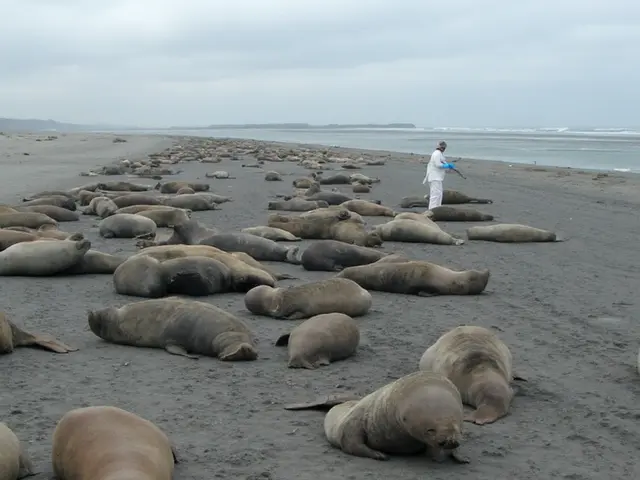Buffel the Elephant Seal Returns to Onrus Beach
Take a walk on Onrus Beach this February and you might run into an unexpected celebrity—Buffel, the Southern Elephant Seal with a rugged scar above his left eye and a distinct yellow tag labeled 16577. Buffel isn’t your everyday beachcomber. He’s part of a rare species native to the wild and icy stretches around Antarctica, and his return to the South African coastline has both wildlife experts and curious locals buzzing with excitement.
Spotting an elephant seal is a treat for anyone living in or visiting the Western Cape. Unlike the smaller, more familiar Cape fur seals, Buffel is an outlier — both in size and in origin. These massive animals usually stick to the far south, well away from humans. But Buffel seems to have a fondness for the region. First tagged way back in 2015 at Buffelsbaai in Table Mountain National Park, he’s made his rounds before—Duiker Island, Cape Point, Fish Hoek Beach, and now, after a nine-year hiatus, he’s lounging on Onrus Beach once again.
This reappearance isn’t just a random sunbathing session. Buffel is undergoing his annual moult, so you’ll find him sprawled on the sand, losing his old skin and growing a fresh new layer. It’s a taxing period for elephant seals. The process takes weeks, and during this time, the seal can’t go back to the water to feed. That’s why you’ll see him resting for long stretches on the beach—and why interference from humans or pets can be a real problem.
Wildlife authorities jumped in fast. They’ve cordoned off a protective area around Buffel to give him the space he needs, asking locals and visitors to respect a 20-meter distance. Leashed dogs are a must, and folks have been urged not to block his escape route back into the waves. The Cape of Good Hope SPCA and the Greater Overberg Stranding Network are watching him closely, hoping he’ll stay safe and undisturbed until he’s ready to move on.
Buffel’s presence is a reminder of just how special and fragile our local wildlife connections really are. His species sits on the IUCN Red List, which means they’re considered threatened and need all the care and attention they can get. South Africa isn’t exactly their home turf, but for reasons only Buffel knows, he’s picked these waters as part of his journey. Observers say he stands out easily—his pale skin and those unique scars make him hard to mistake for another seal. In the wildlife community, spotting Buffel is almost like finding a needle in a haystack.
There’s also a growing sense of community pride tied to his visits. Local volunteers and marine biologists document every appearance, cataloguing his movements and making sure onlookers know the rules. With each return, Buffel strengthens the bond between people and the region’s wild spaces, shining a spotlight on the ways communities can help rare animals thrive—even far from their typical stomping grounds.
Protecting Buffel and Lessons in Conservation
The story doesn’t stop at a single visit. When an elephant seal like Buffel turns up, it triggers a full mobilization from organizations who specialize in marine strandings and animal protection. These teams get busy: marking out protective perimeters, printing information leaflets, and making sure word gets out about keeping litter and noise to a minimum near the animal. Even local social media groups have chipped in, sharing updates and gentle reminders not to disturb Buffel while he’s on the mend.
Why so much fuss over one animal? The truth is, rare appearances like Buffel’s offer a snapshot into the bigger picture of ocean conservation. Elephant seals face all sorts of risks, from dwindling food sources caused by overfishing to entanglement in marine debris. When one of them chooses to haul out on a beach in South Africa, it says something about the safety and quality of the local environment. Protecting Buffel for these few days means keeping an eye on broader ecosystem health too.
For now, all eyes are on Buffel as he naps, sheds skin, and waits out his moult on Onrus’ sands. If left in peace, he might decide to stay for a while, giving scientists and locals alike a chance to learn from his presence. Or, in true wild animal style, he could slip away overnight, disappearing as quietly as he arrived. Either way, Buffel’s visit is a rare reminder of just how much life the world’s coastlines still hold—and how easily it can slip through our fingers without the right kind of attention and care.








